If you found your way into this blog entry, the chances are you are here to learn more about how to dehydrate chanterelles. I have used multiple ways to dehydrate mushrooms. The best way, time and time again is to use a dehydrator to have that perfectly dry and dehydrated muhsrooms.
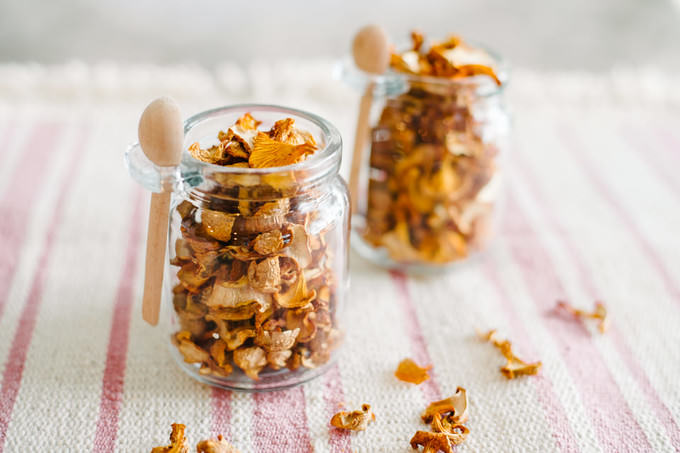
For this tutorial I am going to be using chanterelles. We picked quite a bit of chanterelles this year and whatever we couldn’t eat either went into sautes or I wet froze them to have it ready for winter use. The last batch I have is being used for dehydration purposes.
Dehydrated chanterelles are a heavenly sight. You can incorporate them in soups, stews and whole bunch of other things. The process of dehydrating chanterelle mushrooms is very, very easy! As long as you have a dehydrator, you are set. Well, you will also need them chanterelles, lol. Let’s get down to learning about how to dehydrate chanterelles, shall we?
Ingredients and tools:
- Chanterelles
- Dehydrator Machine
Directions:
There are important steps to keep in mind if you want the dehydration process for chanterelles (or any other mushrooms for that matter) to go smoothly. There is no need to deep wash or soak mushrooms in water in order to clean them. Remember that mushrooms are essentially like porous sponges. They’ll soak up a lot of water. Since we are trying to get rid of the the excess water, soaking the chanterelles in water might be a little counter productive. Just cleaning them off under a running water, or using a small brush to clean off the dirt should suffice. When you will get to cooking the dry mushrooms later, you can always further wash it off. If you absolutely must wash the mushrooms, make sure you thoroughly dry them with paper towels.
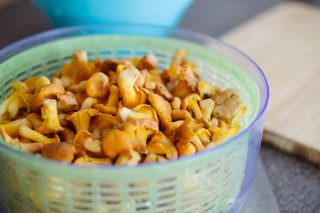
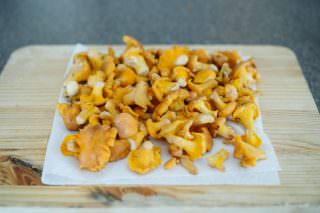

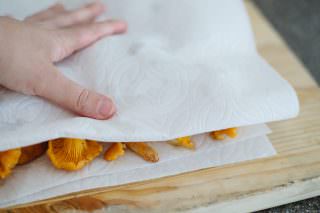
Slice mushrooms lengthwise at about 1/4 inch thickness. Smaller mushrooms can be kept without being cut. If they are small enough, their size will be sufficient enough to be dried wholly.


Employ your children or anyone idly zooming around to help you with stacking the chanterelles on the dehydrator nets. In this case my son had nothing better to do. So, I asked him to help me with the process of lining the mushrooms on the dehydrator nets/trays.

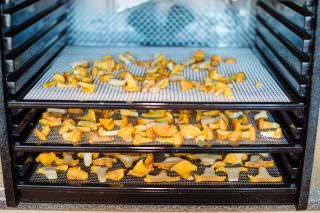
Place the nets inside the dehydrator machine and set the temperature accordingly. Here where it gets a little geeky. There are a lot of views out there regarding the temperature settings for dehydrating mushrooms. Some claim that the lower the setting the better your results. That’s of course when it comes to preserving most of the nutritious value of the mushrooms. Some say even if you go higher with the temperature, the nutritional value of the mushrooms will not suffer badly.
I have read that some people “nuke” their mushrooms close to 160F. Some go as low as 105F. The difference, aside from the nutritional value, is obviously the time you are going to end up using the dehydrator. I like to keep it at the middle ground, with 125F. I also recommend you check the dehydrator every 2 hours. It also depends on how well your dehydrator works. Excalibur works like a charm. So, I only used it for about 4 hours at 125F. Some people end up using their dehydrator overnight. That I haven’t done yet. Either way, please read the manual that comes with your dehydrator. Do a little research, use my tutorial and you’ll be set.
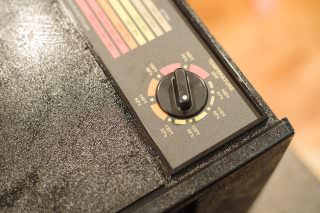

Like I mentioned above, check the dehydrator every couple of hours or so to see if the process is going well. You’ll know the mushrooms are dehydrated enough when the texture becomes leathery and the mushrooms snap like a cracker when bent. I let the mushrooms cool a bit and place them in an airtight container or a space saver bag for storage. Dehydrated chanterelles will store well in air-tight container. The shelf life of these can span for multiple years. That’s of course if you’ll not finish them within a couple of months.
I hope you found this tutorial about how to dehydrate chanterelles useful. If you have any questions, do leave them in the comment section. I’ll be glad to respond do your questions or concerns.







